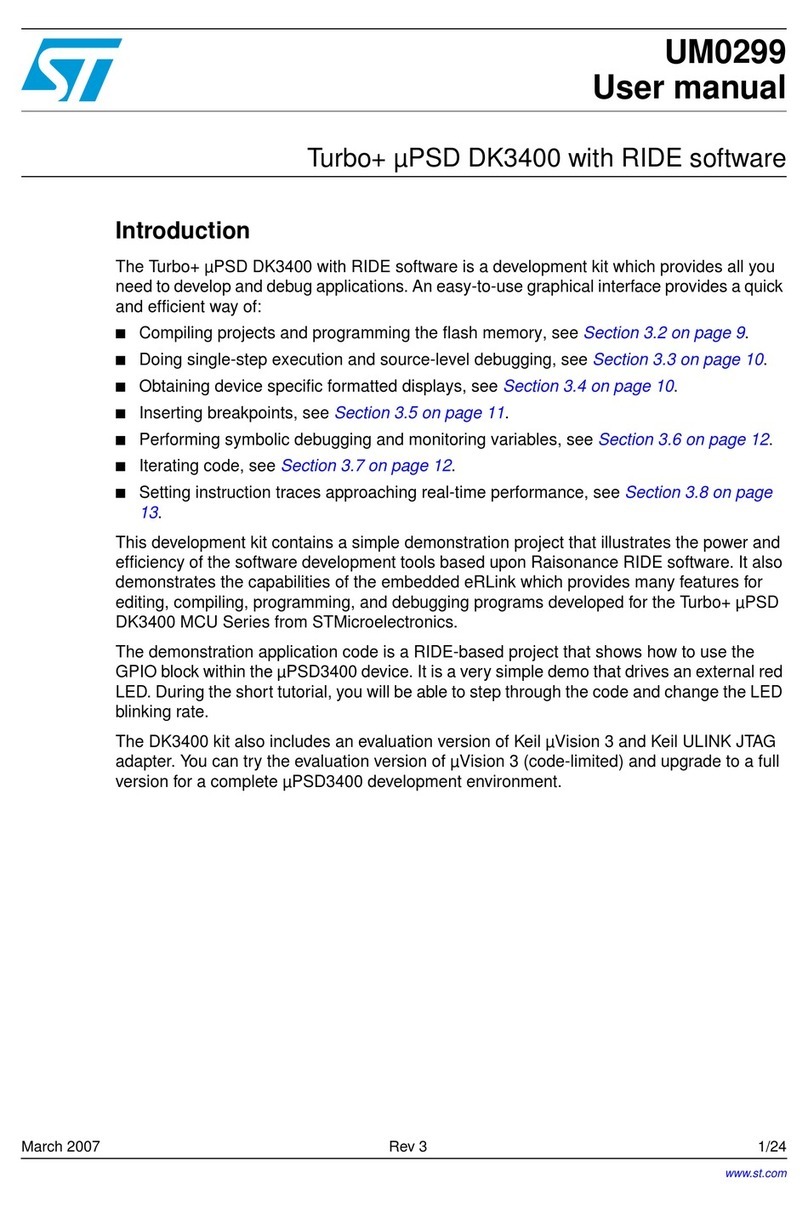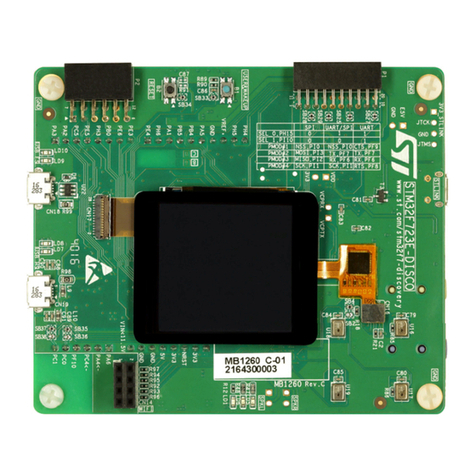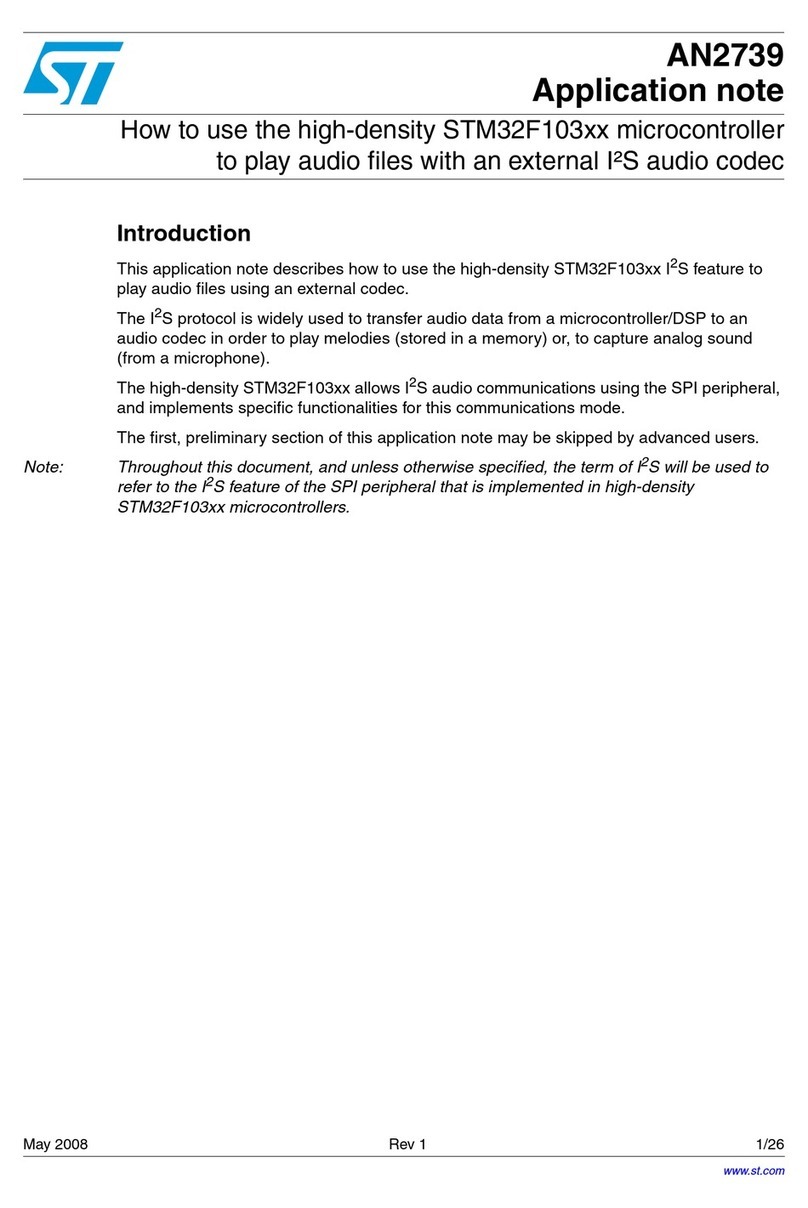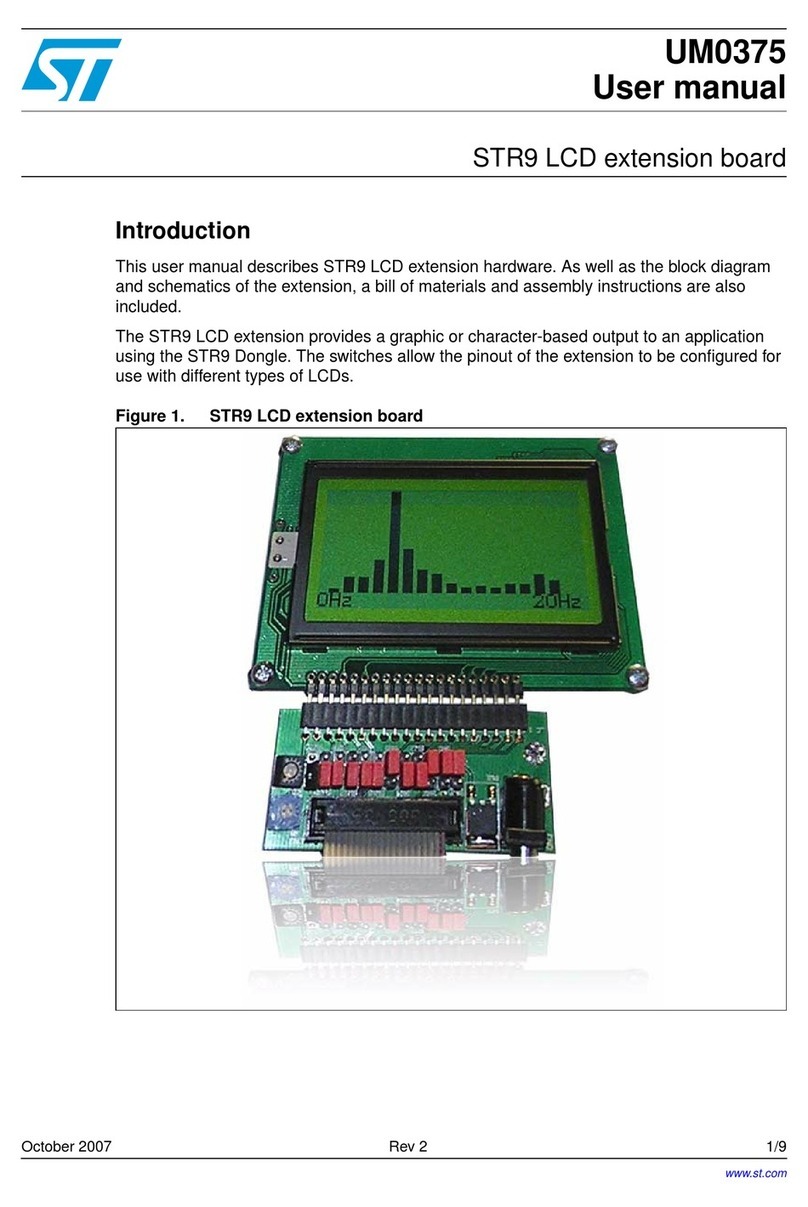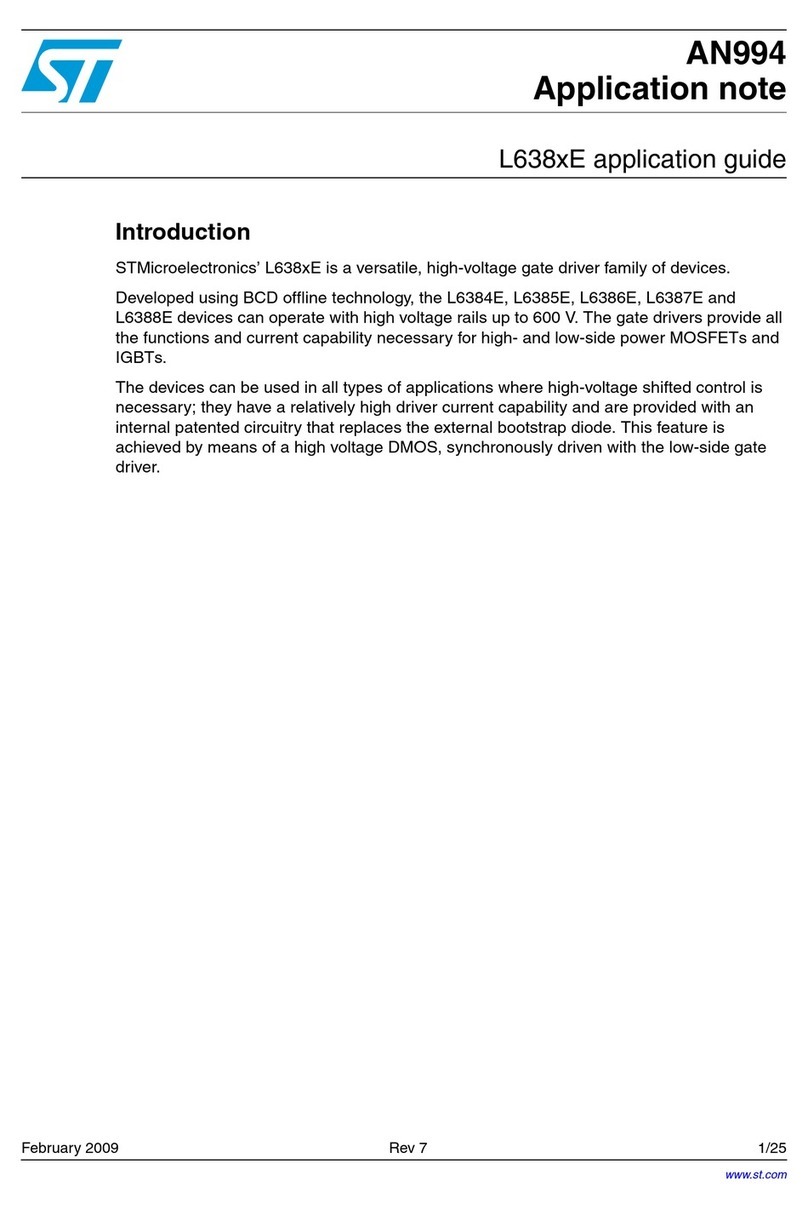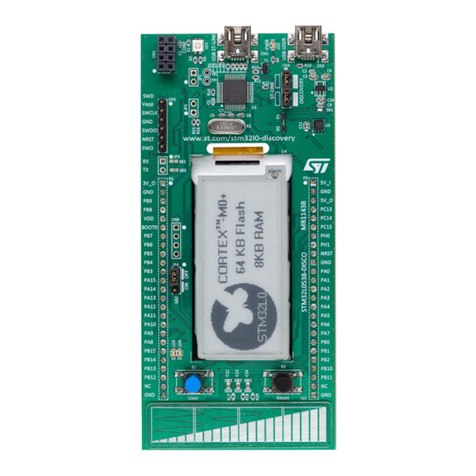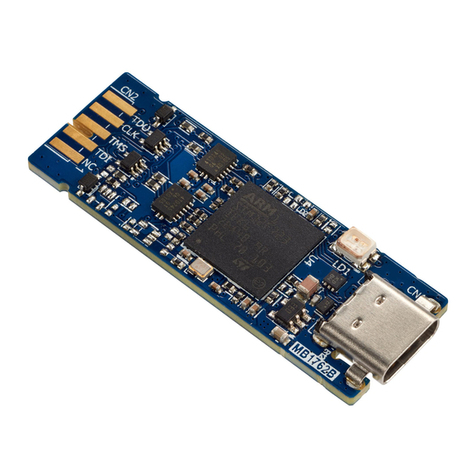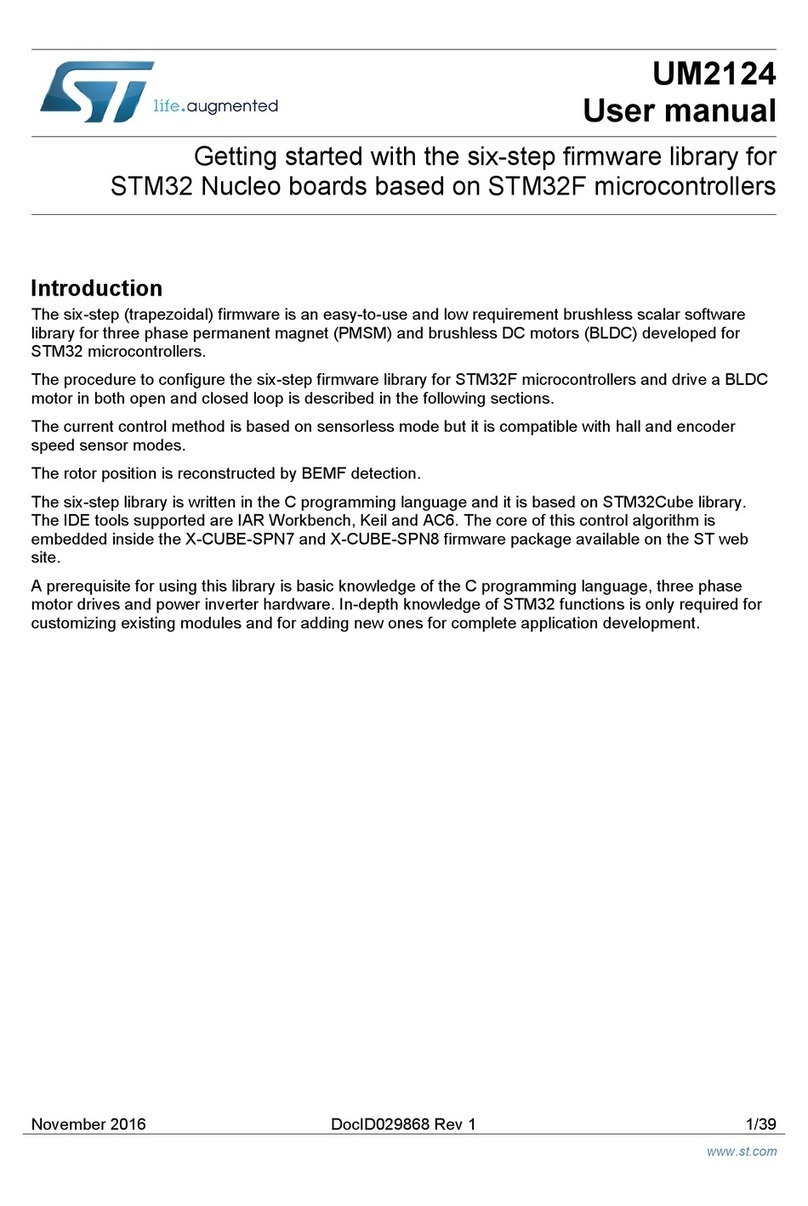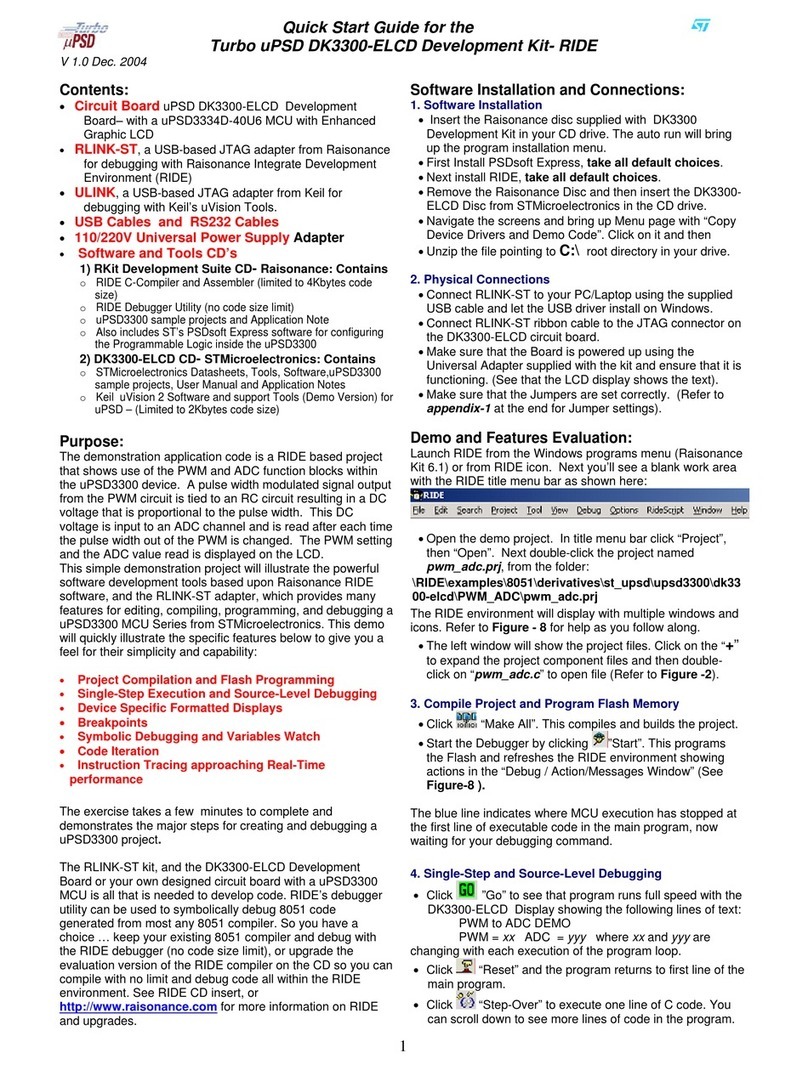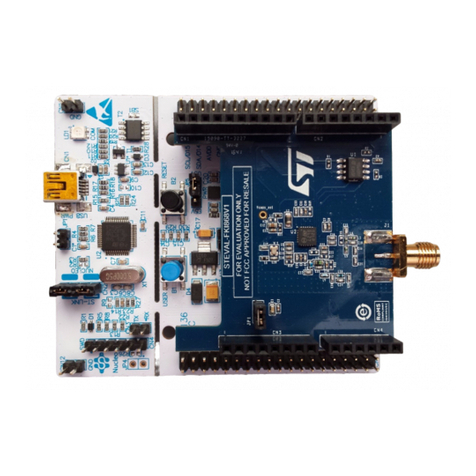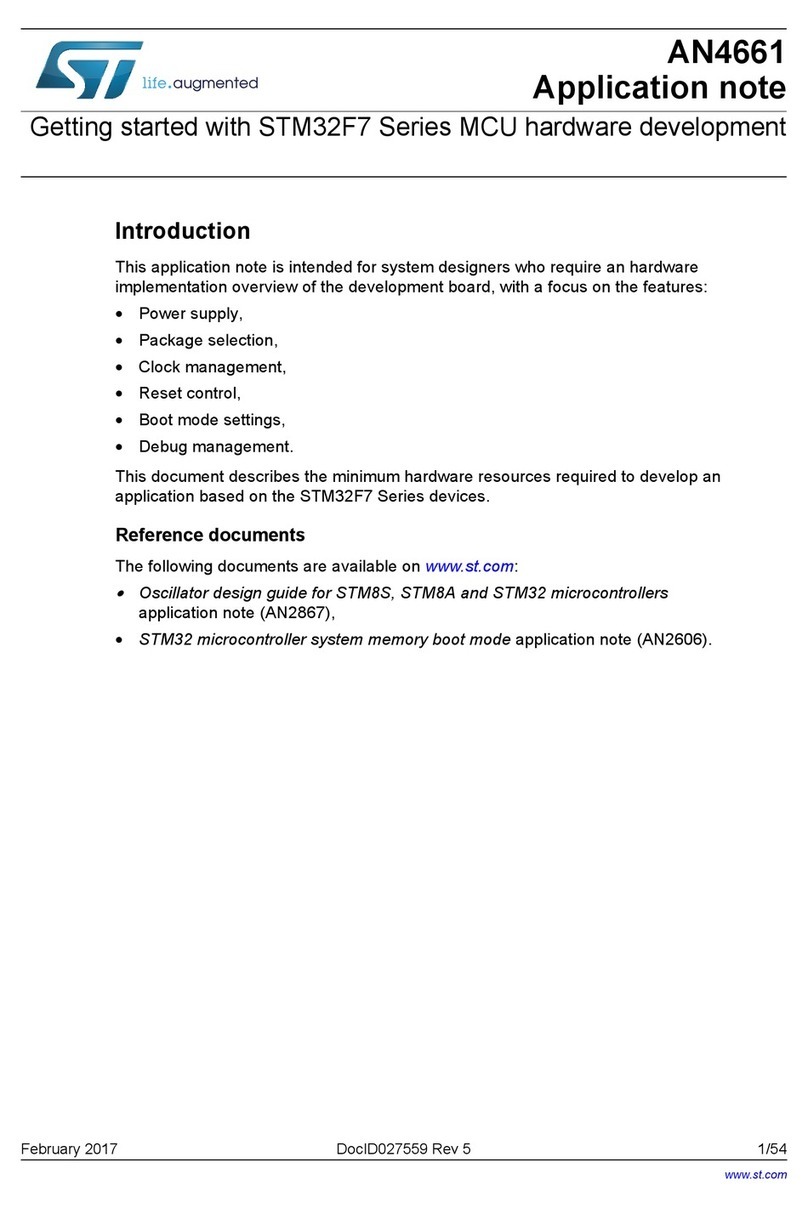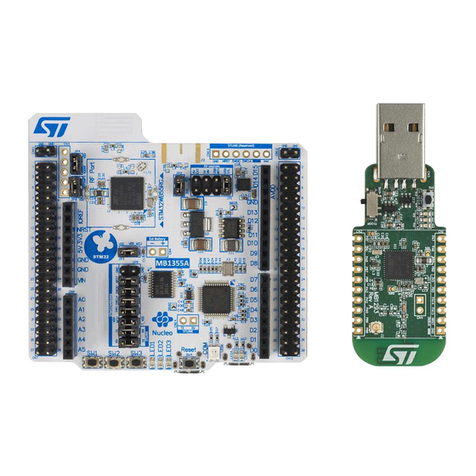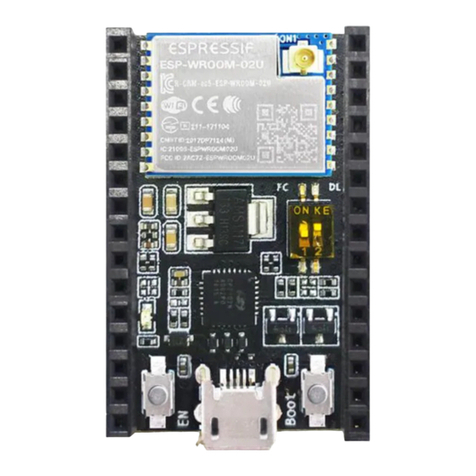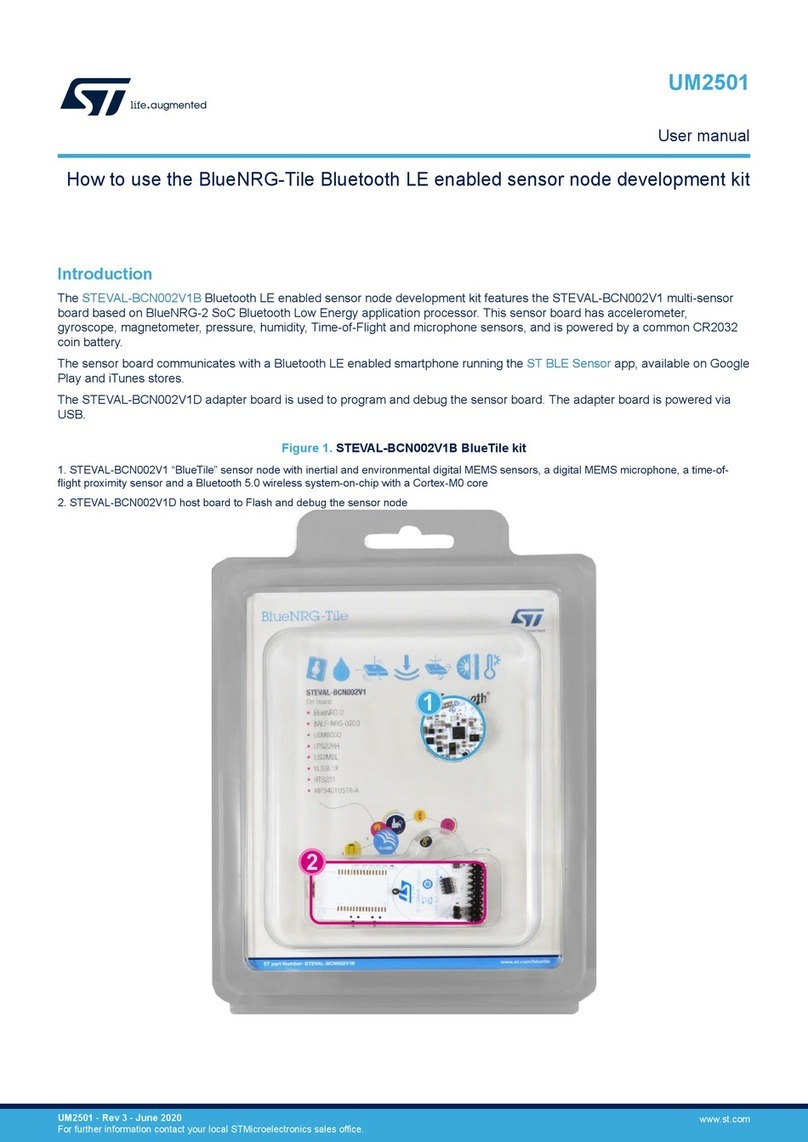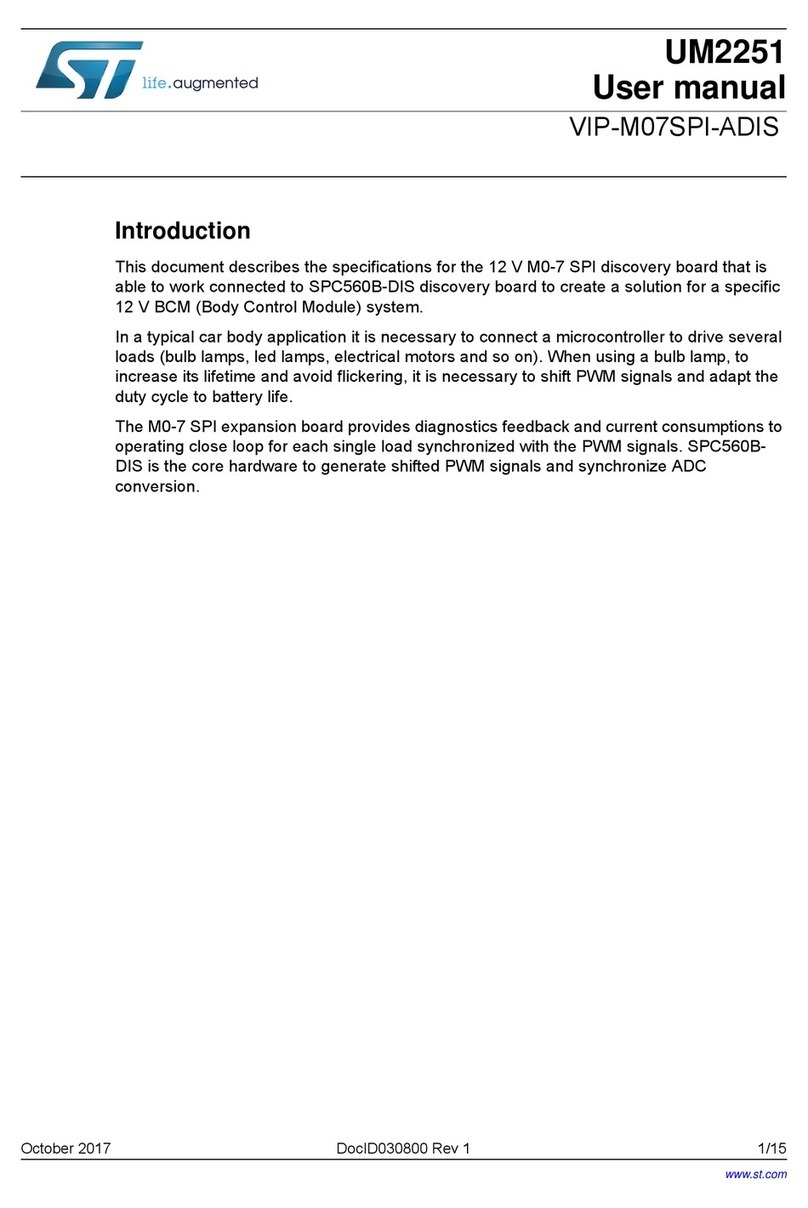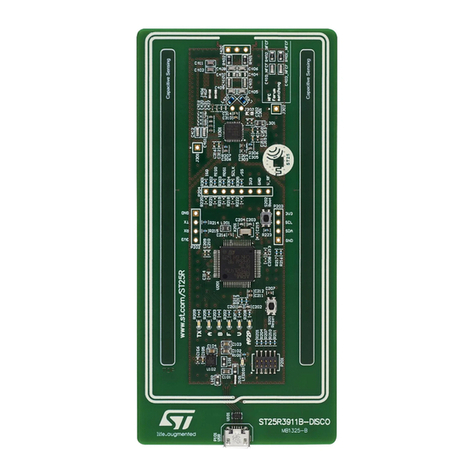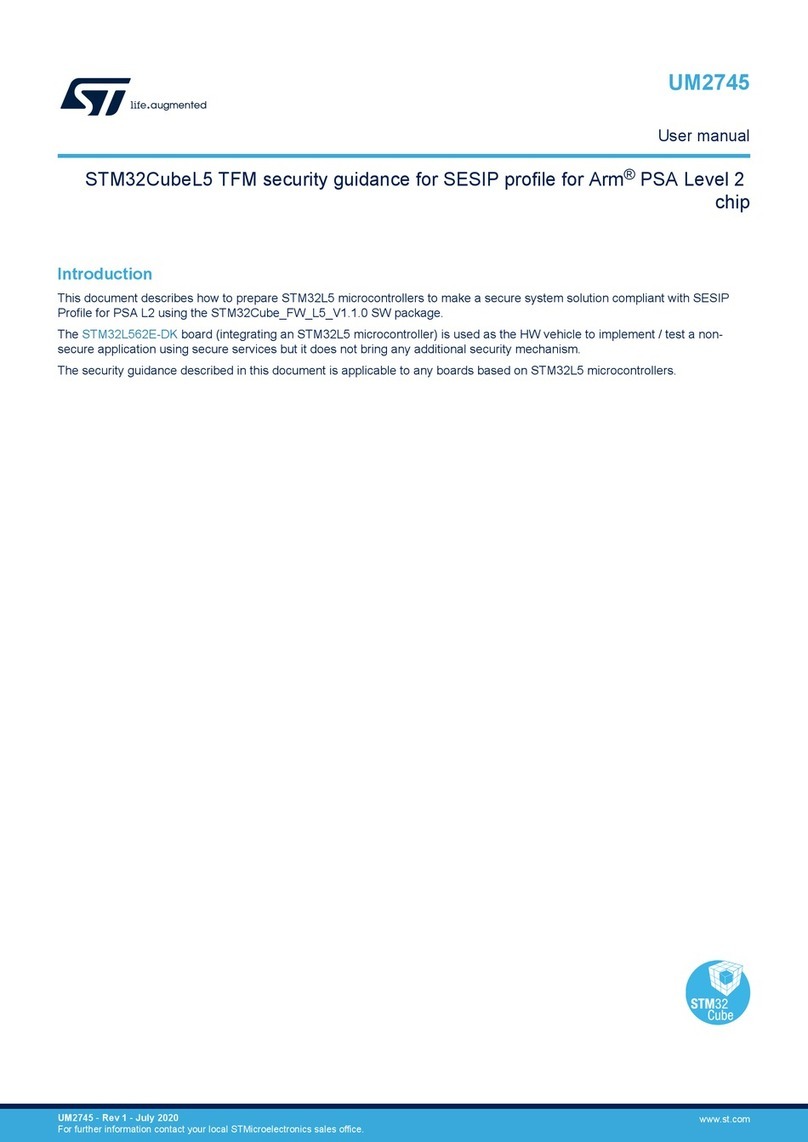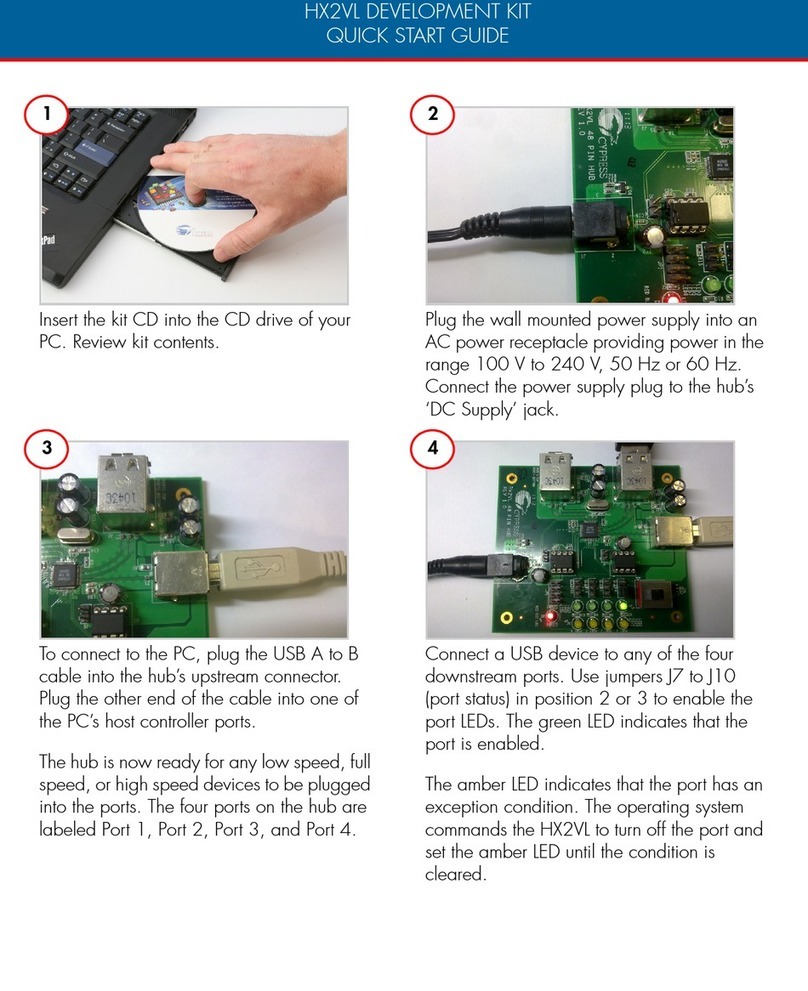
DocID027559 Rev 2 9/45
AN4661 Power supplies
44
When the backup domain is supplied by VBAT (analog switch connected to VBAT because
VDD is not present), the following functions are available:
•PC14 and PC15 can be used as LSE pins only.
•PC13 can be used as tamper pin (TAMP1).
•PI8 can be used as tamper pin (TAMP2).
1.1.4 Voltage regulator
The voltage regulator is always enabled after reset. It works in three different modes
depending on the application modes.
•In Run mode, the regulator supplies full power to the 1.2 V domain (core, memories
and digital peripherals).
•In Stop mode, the regulator supplies low power to the 1.2 V domain, preserving the
contents of the registers and SRAM.
•In Standby mode, the regulator is powered down. The contents of the registers and
SRAM are lost except for those concerned with the standby circuitry and the backup
domain.
Note: Depending on the selected package, there are specific pins that should be connected either
to VSS or VDD to activate or deactivate the voltage regulator. Refer to the voltage regulator
section in the datasheet for more details.
1.2 Power supply scheme
•VDD = 1.7 to 3.6 V: external power supply for I/Os and the internal regulator (when
enabled), provided externally through VDD pins. The VDD pins must be connected to
VDD with external decoupling capacitors: one single tantalum or ceramic capacitor
(min. 4.7 μF) for the package + one 100 nF ceramic capacitor for each VDD pin.
•VSSA, VDDA = 1.7 to 3.6 V: external analog power supplies for ADC, DAC, Reset
blocks, RCs and PLL. VDDA and VSSA must be connected to VDD and VSS, respectively.
The VDDA pin must be connected to two external decoupling capacitors (100 nF
ceramic + 1 μF tantalum or ceramic).
•VDDUSB can be connected either to VDD or an external independent power supply (3.0
to 3.6V) for USB transceivers. For example, when the device is powered at 1.8V, an
independent power supply 3.3V can be connected to VDDUSB.
The VDDUSB pin must be connected to two external decoupling capacitors (100 nF
ceramic + 1 μF tantalum or ceramic).
•VBAT = 1.65 to 3.6 V: power supply for RTC, external clock 32 kHz oscillator and
backup registers (through power switch) when VDD is not present.
The VBAT pin can be connected to the external battery (1.65 V < VBAT < 3.6 V). If no
external battery is used, it is recommended to connect this pin to VDD with a 100 nF
external ceramic decoupling capacitor.
Note: VDD/VDDA minimum value of 1.7 V is obtained when the internal reset is OFF (refer to
Section 1.3.5: Internal reset OFF).
•The VREF+ pin can be connected to the VDDA external power supply. If a separate,
external reference voltage is applied on VREF+, a 100 nF and a 1 μF capacitors must be
